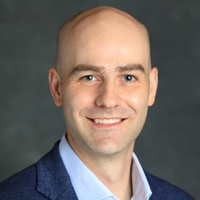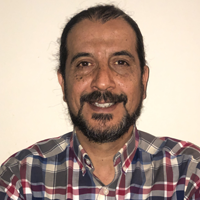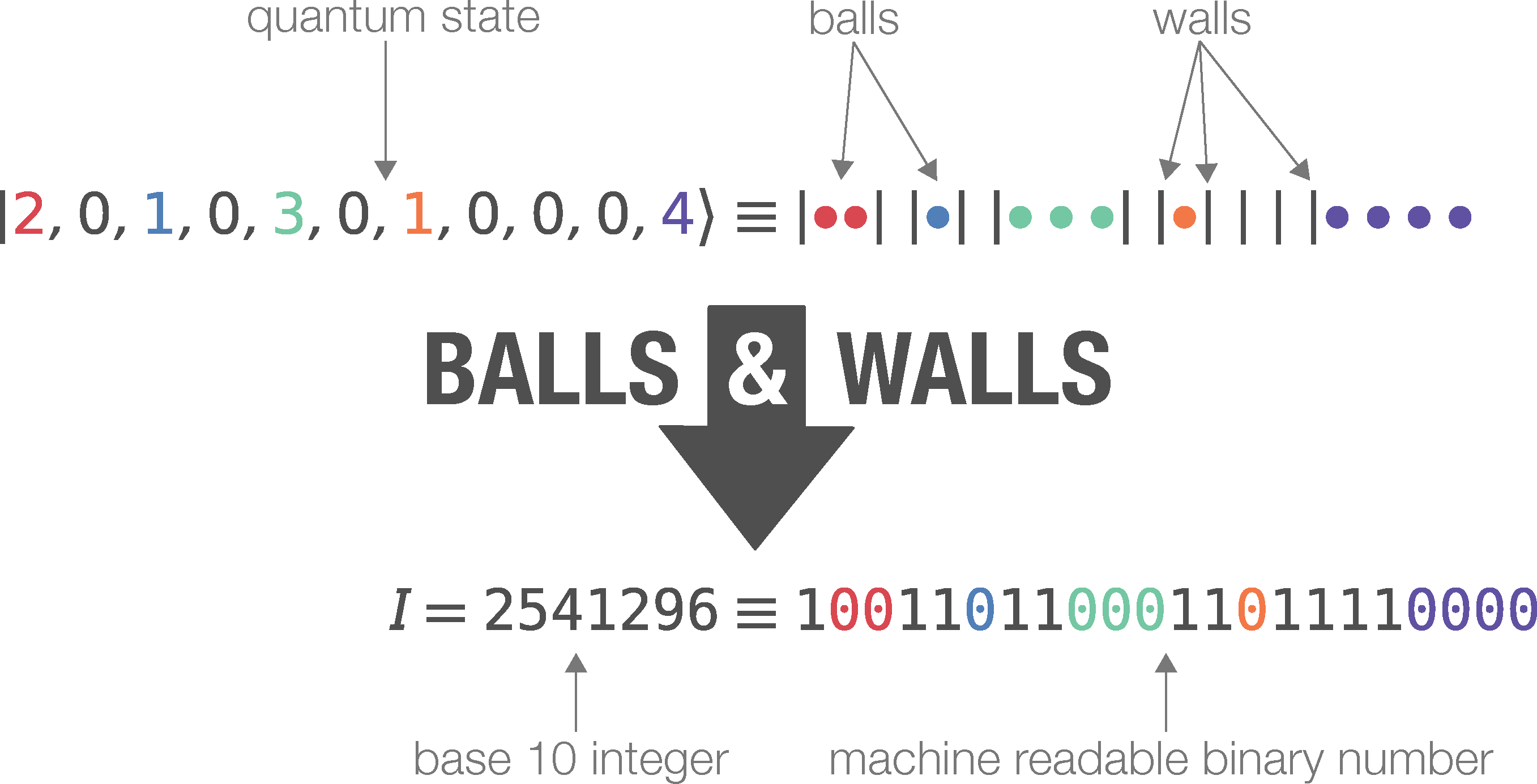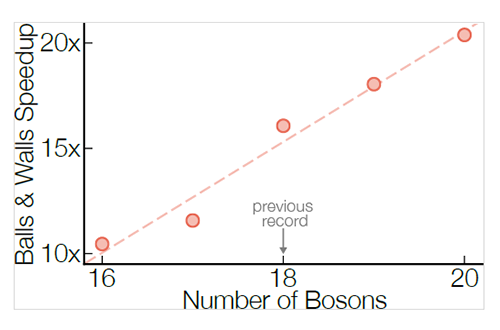Building Bridges for the Quantum Era
May 31, 2022
Speed.
Adrian Del Maestro and Hatem Barghathi are talking about speed, and memory, and how many bytes you need to type a single letter. In classical computers those workings are neatly spelled out: things are either on or off. But Del Maestro and Barghathi think in quantum scales, the tiny systems where classical mechanics doesn’t hold up and the multitude of particle configurations is so large, it seems impossible to count and store.

Adrian Del Maestro

Hatem Barghathi
With colleagues from the Tickle College of Engineering, they’ve devised a shorthand to describe these configurations, dramatically speeding up calculations and with them scientists’ ability to predict how quantum systems behave. This kind of innovative thinking sets the stage for quantum materials to take the baton from silicon as new technologies emerge. With investment in the Quantum Materials for Future Technologies cluster, UT is well situated to be a scientific leader in this new era.
Del Maestro, a professor in both the Department of Physics and Astronomy and the Min H. Kao Department of Electrical Engineering and Computer Science, has been intrigued by quantum science since graduate school. The cluster opportunity brought him to UT from the University of Vermont. Barghathi, a postdoctoral researcher in his group, came along. Counting six new hires and current faculty in physics and engineering, by next year the cluster will have 15 or so active researchers mining the depths of quantum materials. Daunting as they may seem with their rebellion against classical physics and their maddeningly small architecture, leaving that territory unexplored would be both a scientific and economic mistake.
"Fundamental advances in materials led to our current ability to harness technology and that has given us the modern age," Del Maestro said. "The fact that we have billions of transistors in our pockets in our iPhones is because of that foundational work.
"At the time, people weren’t trying to build iPhones," he continued. "They were trying to understand the properties of materials. And so what we’re trying to do right now is understand and harness the properties of a new class of quantum materials that can exhibit dizzying non-classical behavior."
Technology often follows a long path that’s not always obvious. A physicist came up with the principle for a transistor in 1925, engineers developed it in 1947, and in 1961 we had the first silicon chip. Quantum materials could be the next chapter.
"We’re really at the start of that," Del Maestro said. "The hope is that if we can learn to understand how to first describe, quantify, characterize, and then harness these things we don’t have classical analogs for, then almost by necessity they’ll lead to what we call post-silicon quantum technologies. That’s really the purpose of the cluster. UT was already a leader in this area. We want to move from being a regional leader to being a national or global leader."
Leading means solving problems, and quantum materials present plenty. One is that it’s hard to predict what atoms (and their electrons) are going to do in a quantum system. Scientists and engineers know how to control electronic current in an iPhone’s transistors, but that’s classical, not quantum physics.

"Say you have 10 blue balls," Del Maestro explained. "Classically, you can always tell the difference between macroscopic objects, like two baseballs or billiard balls. If you look hard enough you can tell them apart. One of the absolutely amazing things about quantum mechanics is that if I give you two electrons or two rubidium atoms, there is no experiment that you can do to distinguish them."
Those atoms are situated on lattice sites—corners, if you will, of the jungle gym-like structure of quantum materials. Complicating matters is that they’re made up of particles that can be fermions or bosons. Fermions sit one to a seat. Bosons can pile on top of each other, causing another headache, especially when you can’t tell them apart. It’s like putting together a football playbook when all the players in front of you have different abilities but look exactly alike, wear identical jerseys, and in some cases hide behind each other.
"I have these atoms and I ask how many different ways can I distribute them. But the atoms are truly indistinguishable. That’s a very hard problem to solve," Del Maestro said.
To find the possible configurations in this scenario, he and Barghathi adapted a counting tool called “balls and walls.” At its most basic, it’s a mathematical formula to quickly figure out problems like how many combinations are possible if you want to buy a dozen donuts in four available flavors.
In this research, Del Maestro and Barghathi wanted to find how many different particle combinations were possible on lattice sites. They found the trick was to consider the setup as two objects: one as an object itself and the second as the edges of buckets you’re putting those objects into. Combining the objects and edges using a special mathematical formula gives you the number of slots available for the objects you want to count.
"Balls and walls allows me to use a simple counting argument to enumerate all possible configurations," Del Maestro said. "Why is it important? If you want to know what the most likely configuration is, you need to know how many times it appears. Configurations are the language in which we solve a problem. We need to know the words in that language before we can write a sentence."
He said the fastest computers in the world have only been able to study 21 fermions on 42 lattice sites, and far fewer bosons. The coding he and Barghathi developed can study 20 bosons on 20 sites: 20 times faster than current methods. Beyond that, it takes much less memory, reducing the needed storage by a factor of the number of sites.

"Think about how much memory you need for each letter that you store in a computer," Barghathi said. "It will basically take eight bits. A number is at least going to take the memory of a letter."
When facing huge numbers of possible configurations, he said, "you need to know how much memory you need to store them and how fast you can deal with them."
Del Maestro explained that "the number of total configurations you need to store is gigantic, so if you can get a factor of 20 smaller, that’s the difference between being able to solve the problem or not. If something used to take a month, now it can take a day. Modern quantum experiments can start to use these larger system sizes and now we can actually predict what they’re going to measure in the lab."
The findings are published in the first paper to come out of two departments from UT’s quantum materials cluster. While Del Maestro and Barghathi brought physics expertise in quantum mechanics, Del Maestro said “to understand this representation at the level of the bits, we needed computer science. This is where our colleagues like Micah Beck, a co-author on the paper, come in.”
The collaboration was a little slow at the beginning, with physicists and engineers speaking different languages about caches and buffers; bosons and symmetries.
"Interdisciplinarity is hard," Del Maestro said. "It takes time and effort and thoughtfulness to build that bridge."
The cluster plays a crucial role in that construction.
"Without that, it’s easy to be very fractured, even if we’re all working in quantum materials," he said.
Del Maestro explained that because the cluster embedded him in engineering and computer science he wasn’t an outsider: he knew who to ask about this problem because he knew Beck was interested in it as well.
"That, I think, is the strength of the cluster," he said. "It was very much spontaneous. The cluster will enable new types of spontaneous advances. We can’t predict where they’re going to come from because they really come at the interface where different expertise all of a sudden fits together and produces something profoundly new."